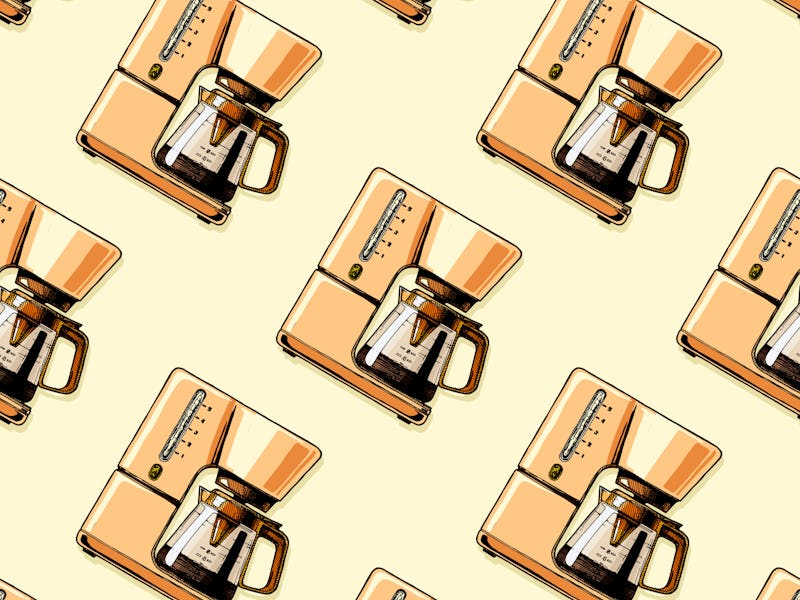This is the most efficient way to make coffee, according to math
This is coffee taken to a new level.

When it comes to ritual, coffee is in a league of its own. Whether it is brewing the perfect stove-top espresso or refining pour-over techniques, many of us care about our coffee. But if you are confused about getting the balance of grounds, water, and time just right, new research provides some math-based guidelines that can help you brew the perfect cup.
In findings published Wednesday in the journal Matter, a team of scientists describe their method to make brewing espresso both more efficient and more reproducible. So here are the ingredients for the ideal cup of joe, according to science.
Make your grounds coarse
Turns out that using the right amount of coffee for the job is only part of the equation: You also need to make sure the beans are the right degree of fine or coarse, the researchers found.
Study co-author Jamie Foster is a mathematician and senior lecturer at the University of Portsmouth. The inconsistent nature of espresso — you can brew two cups in precisely the same way, but yield different flavors — was part of what the team hoped to better understand, Foster tells Inverse.
The coarseness of the coffee turned out to be key, he says. Conventional coffee wisdom dictates that if you want a stronger cup of coffee, you should grind your beans finely. The logic is that the larger surface area enables more coffee to dissolve, making the drink is stronger, Foster says. But it seems that is only true up to a point, he says.
If you grind too finely, the smaller particles will clog up parts of the coffee bed — the basket that holds your beans — making some of the coffee inaccessible, reducing the amount of coffee you can extract.
“You end up wasting those parts of the bed,” Foster says. And it’s hard to know how much will go to waste. “The clogging process is very unpredictable and chaotic.” So if you want a more consistent cup, you may be better off using coarser grounds, he says.
Brewing up efficiency
The same trick also allows you to use less coffee in the first place, Foster says. Not only is it a more efficient method, it can also save you money in the long run.
Since he started studying coffee, Foster has gained a new appreciation for the art of espresso making and how many carefully balanced variables play into taste.
“Now I appreciate how difficult it is to make good coffee,” he says. “I’m kind of in awe about how baristas manage to do it.”
At home, Foster’s work translates into more careful measuring and brewing. “I make my coffee better than I used to,” he says.
He says that his daily coffee intake has crept up higher lately — he averages around four espressos per day — which, as Inverse has reported, research suggests is perfectly fine. In fact, a 2019 study suggests that six cups per day is the upper limit of what's healthy for most people.
Flavor factors and conservation
Christopher Hendon, co-author on the new study and a chemist at the University of Oregon, spoke to Inverse about his coffee research in 2018. Hendon, known as “Dr Coffee” to some colleagues, pointed out that even the water you’re using influences coffee’s flavor. Water with more magnesium and calcium results in a stronger flavor, for instance. By contrast, freshly roasted beans yield a more robust flavor, he says.
There are about 2,000 chemicals in coffee, all of which influence the full range of flavors inside. Ultimately, one goal of research is to be able to prescribe a coffee recipe for an individual based on their preferences.
The brewing method Hendon and Foster describe in the new study could help both professional and at-home baristas save money by conserving coffee beans. With coffee crops under threat from climate change, Foster doesn’t anticipate that need diminishing any time soon.
“Wasting less coffee is becoming increasingly important,” Foster says. “No matter how much you’ve saved you can always save a bit more.”
Given how particular we can all be about coffee, unfortunately science may never fully answer how to better one’s brew. Getting coffee just right is kind of a “moving target,” Foster says. “One thing people like is that there’s art to it — you can make a drink to your taste.”
“I wouldn't be surprised to see the question of taste remains an art rather than a science for some time,” he says.
Abstract: Espresso is a beverage brewed using hot, high-pressure water forced through a bed of roasted coffee. Despite being one of the most widely consumed coffee formats, it is also the most susceptible to variation. We report a novel model, complimented by experiment, that is able to isolate the contributions of several brewing variables, thereby disentangling some of the sources of variation in espresso extraction. Under the key assumption of homogeneous flow through the coffee bed, a monotonic decrease in extraction yield with increasingly coarse grind settings is predicted. However, experimental measurements show a peak in the extraction yield versus grind setting relationship, with lower extraction yields at both very coarse and fine settings. This result strongly suggests that inhomogeneous flow is operative at fine grind settings, resulting in poor reproducibility and wasted raw material. With instruction from our model, we outline a procedure to eliminate these shortcomings.